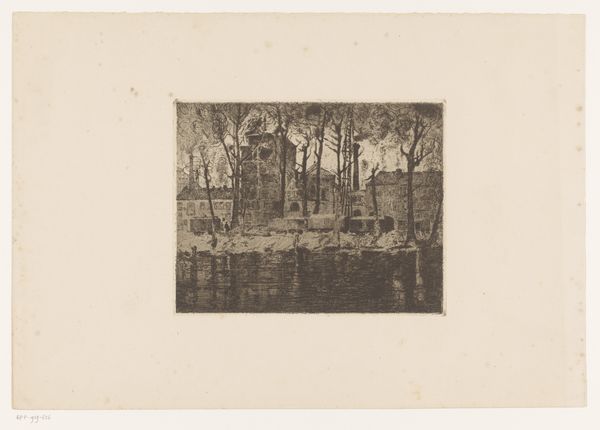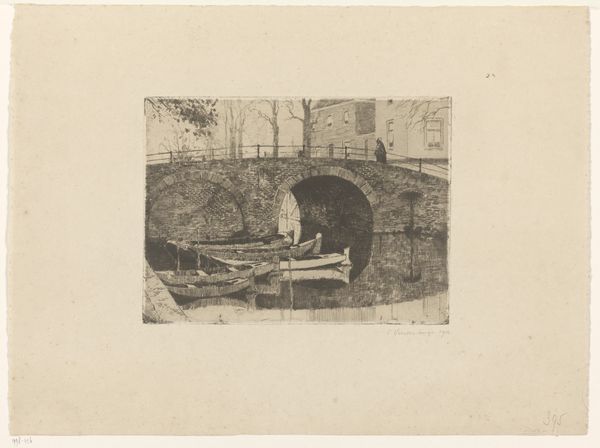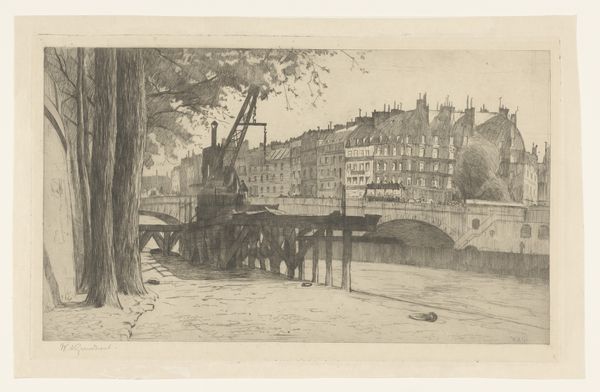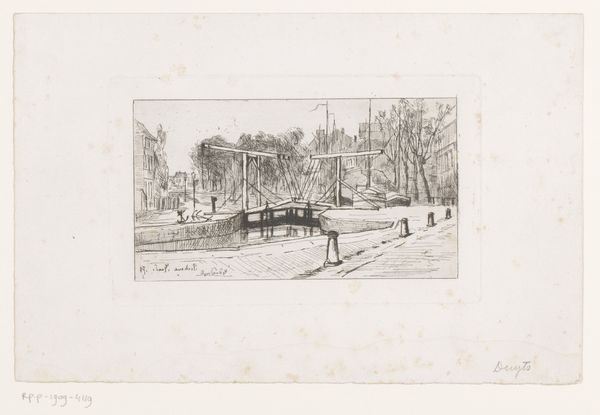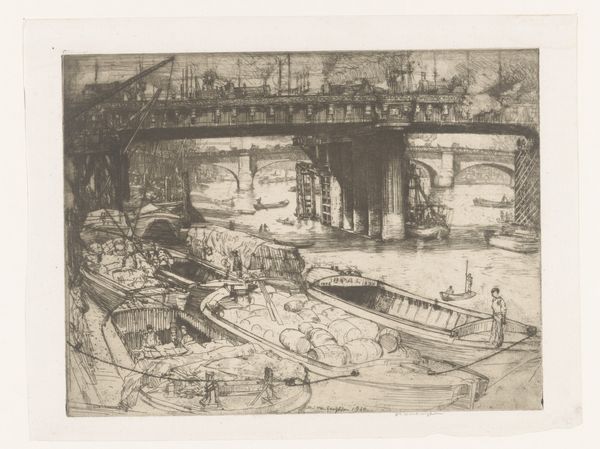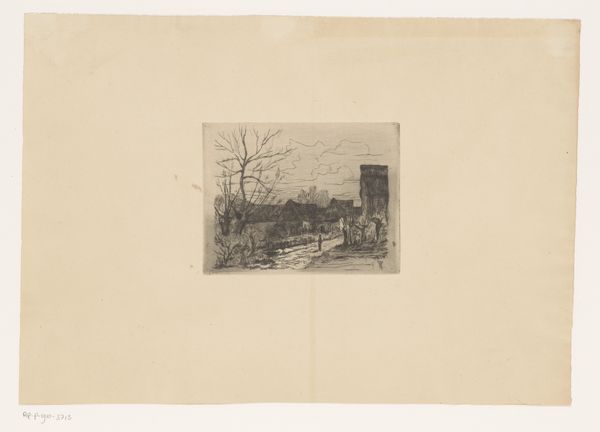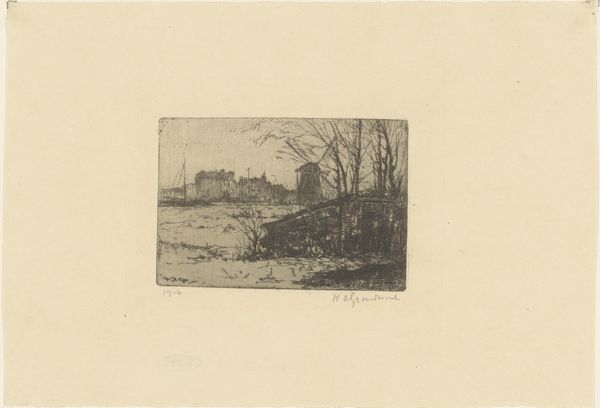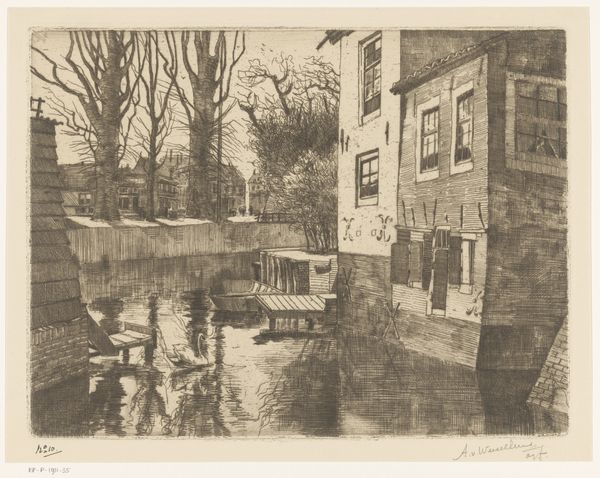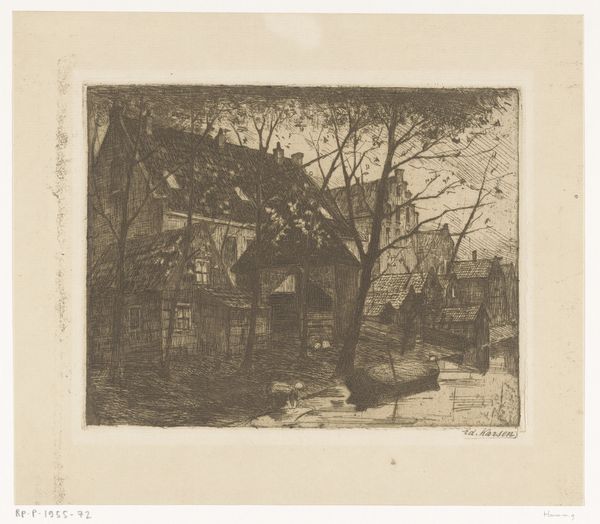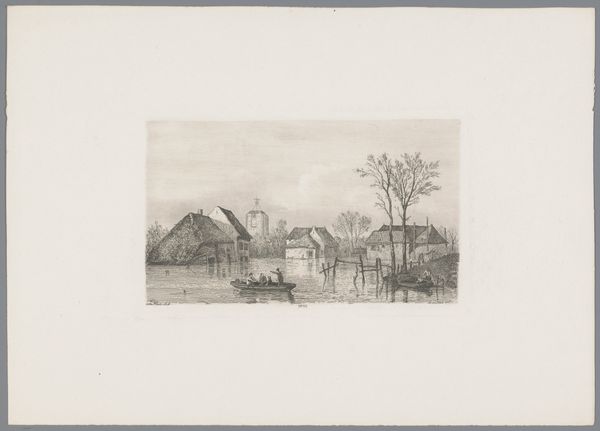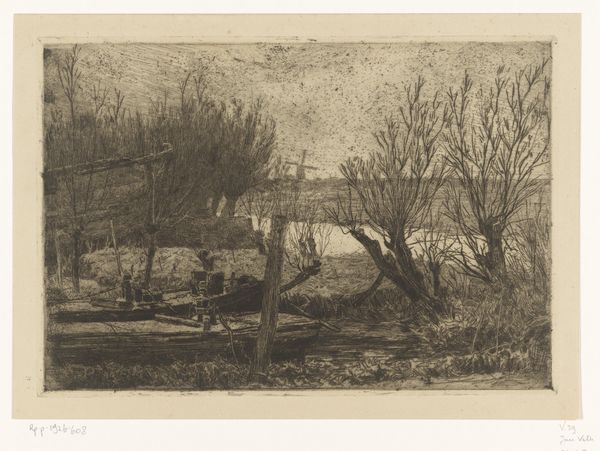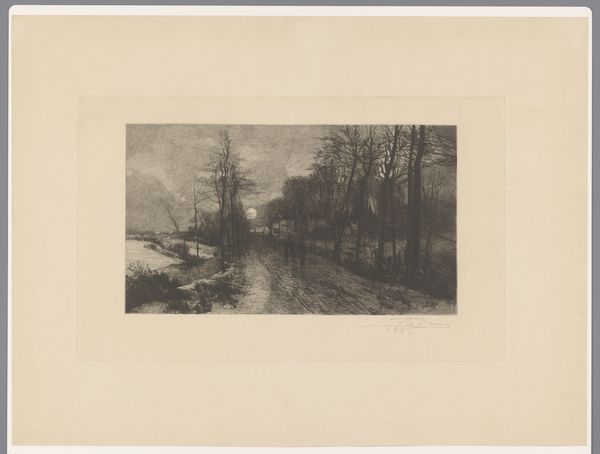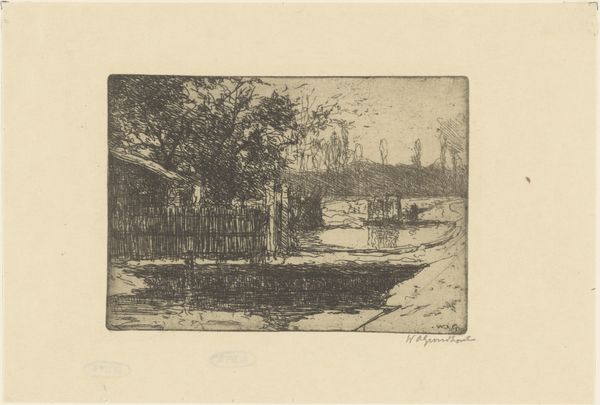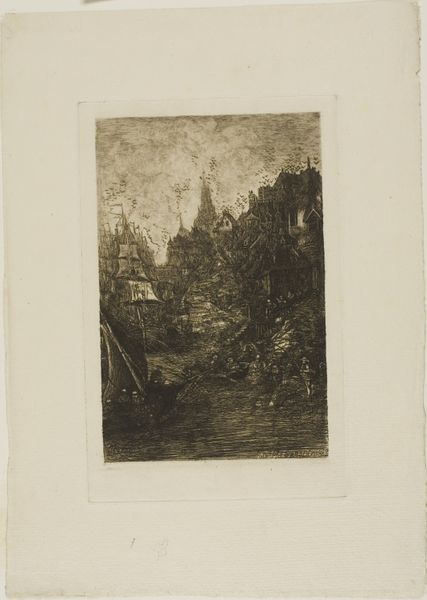
View of the Bridge between Prinsengracht and Brouwersgracht, Amsterdam c. 1895 - 1900
0:00
0:00
Dimensions: height 319 mm, width 360 mm, height 405 mm, width 447 mm
Copyright: Rijks Museum: Open Domain
Curator: Oh, this makes me long for a brisk walk along the canals. I imagine myself bundled in a thick coat, a steaming cup of something warm in my gloved hands... Editor: Indeed. George Hendrik Breitner captured this evocative view of the bridge between Prinsengracht and Brouwersgracht in Amsterdam, circa 1895 to 1900, using photography as his medium. The photograph's silvery tones establish a rather pensive, muted mood. Curator: Muted, yes, almost melancholic, in a way I really like! It makes you consider impermanence... or maybe just the next laundry day. Editor: Note the asymmetrical composition. The bridge itself, with those robust arches, isn't perfectly centered. Rather, it’s deliberately offset, inviting your gaze to travel from the foreground's textures – that blurry, almost painterly ground – towards the buildings in the background. The effect adds a dynamism absent in many conventional cityscapes. Curator: Absolutely. It feels like you're there, a bit off-balance, looking over your shoulder. It’s not a static postcard view. It’s about a lived experience, catching a fleeting moment, which I associate with the best kind of impressionistic art. Plus, look how ordinary it all seems—the laundry hanging to dry. Editor: The seemingly "ordinary" aspects are exactly the point, don’t you think? Breitner uses the then-nascent medium of photography, a supposed recorder of reality, to investigate the poetics of everyday life. The light itself—natural, muted—becomes a primary subject. Curator: Breitner, he just gets it. Art is in living, really looking, even at the gray days. And somehow he makes this simple photograph carry so much weight. What a gift! Editor: It prompts one to consider how the photographic medium, often seen as objective, can be a source for a profound understanding of visual and emotional texture. So many layers to decode! Curator: Absolutely, next time I visit the Rijksmuseum, this is the work I will linger over, and then I will seek out that cafe with the really great hot chocolate.
Comments
rijksmuseum about 2 years ago
⋮
George Hendrik Breitner (1857-1923) gelatin silver print, c. 1895-1900 Breitner was the Impressionist of the photographers. He worked by morning light, at dusk, and in the gloom of an alley. He saw the light shining through fluttering laundry, or of a chilly morning with a passer-by. He was unconcerned by blurring, an uneven horizon, or a cropped tree. These were the exciting coincidences that resulted from working with a rapid hand-held camera.
Join the conversation
Join millions of artists and users on Artera today and experience the ultimate creative platform.
